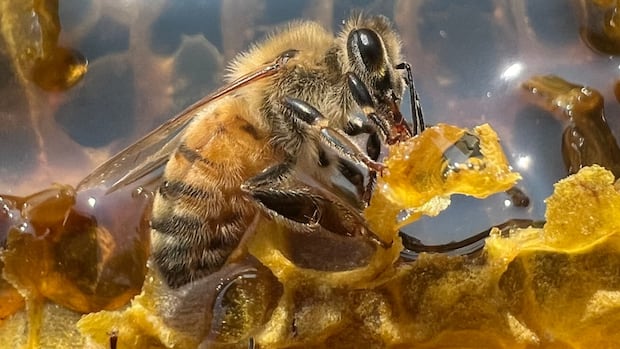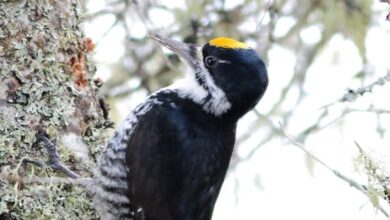Scientists researching wasps that may protect B.C. berries

Every year, invasive insects gnaw away at Canadian farms, gardens and wild plants, spreading disease and disturbing ecosystems.
But tiny wasps that lay body-bursting eggs in invasive insects may be able to help B.C. berry growers protect their crops.
“It’s like a free service nature is providing us to help control crop pests,” said Paul Abram, an Agriculture and Agri-Food Canada research scientist. He’s studying what happens when the insects are released into B.C. ecosystems.
Abram is one of several research scientists are testing how several species of parasitoid wasps can keep invasive pests in check across Canada.
Invasive flies
Spotted-wing drosophila, a tiny species of invasive vinegar fly native to Southeast Asia, lays eggs inside soft fruit — like cherries and raspberries — causing it to rot prematurely. It was first spotted in North America in 2009, and has since spread across the continent.
There is little research into these flies’ impact in Canada.
One study, in the Journal of Economic Entomology, finds that in Maine, the spotted-wing drosophila could cause up to a 30 per cent yield reduction in blueberries.
Another study, in the Journal of Integrated Pest Management, found that of 82 Minnesota raspberry growers surveyed, the median yield lost to the flies was about 20 per cent.
The B.C. Climate Change Adaptation Program, a collaboration of agricultural organizations, producers, researchers and the federal and provincial governments, lists the pest as a “major threat” on its website.
This isn’t only an issue for humans. Agriculture Canada entomologist Chandra Moffat said the flies also target wild berries, which are a food source for wild animals.
The solution, according to Moffat, could be to bring the spotted-wing drosophila’s natural predator to Canada.
“One of the mechanisms that really lead to it being so invasive is it’s separated from its natural enemy,” Moffat said. “We’re really working to reunite the invasive pest with its natural enemy from the native range.”
Ronin and samba wasps
Enter the ronin and samba wasps, two wasp species native to China, Japan and Korea. They find the little vinegar flies, and lay their eggs inside the fly larvae. The wasp eggs wait until the larvae form a cocoon-like structure called a pupa casing — then, they strike.
“They’ll eat the whole inside of the fly,” Abram said. “Then, they’ll develop into a wasp and burst out, like the chest-bursting alien [from the movie Alien] out of the fly’s pupa casing.”
The wasps do not attack or lay eggs in humans.

Just like their hosts, ronin and samba wasps have already reached B.C., unintentionally. In 2019, Abram went looking for spotted-wing drosophila in a raspberry field near Agassiz, B.C. There, to his surprise, he found the tiny ronin and samba wasps flying around the fruit.
Both wasps were shown to kill an average of 13 per cent, and in some cases up to 53 per cent, of spotted-wing drosophila larvae.
Allan Carroll, a professor of insect ecology at the University of British Columbia, said the wasps may be a valuable alternative to pesticides.
“If this is a way of controlling the population to the point where it doesn’t cause damage and we don’t have to apply chemical insecticides, I would take that as an environmental win,” he said.
According to Moffat, many parasitoid wasps can only survive off of a single species of insect.
“They’re not able to just go and and choose a different species of insect, because they’re so tightly co-evolved with the insect host they’ve been feeding on for millions of generations,” she said.
Abram noted that ronin wasps have also been found to target two other species of vinegar fly, while samba wasps target spotted-wing drosophila, specifically.
Control over invasive species
The wasps are part of an arsenal of parasitoids researchers are studying for pest control.
Some wasps species are already used to keep aphids in check, preventing the spread of blueberry-devastating scorch virus. Farmers can purchase cardboard squares covered in the wasps’ larvae, which they can hang up in greenhouses to protect their berries.
Abram said parasitoid wasps can also be put in golf-ball sized cardboard packages that can be scattered across a field by helicopter or drone.
Abram’s team is years away from providing ronin and samba wasps to farmers, he said. They’re still testing how these wasps fit into the bigger picture of B.C. ecosystems — and what happens if the spotted-wing drosophila population is suddenly brought down in Canada.




